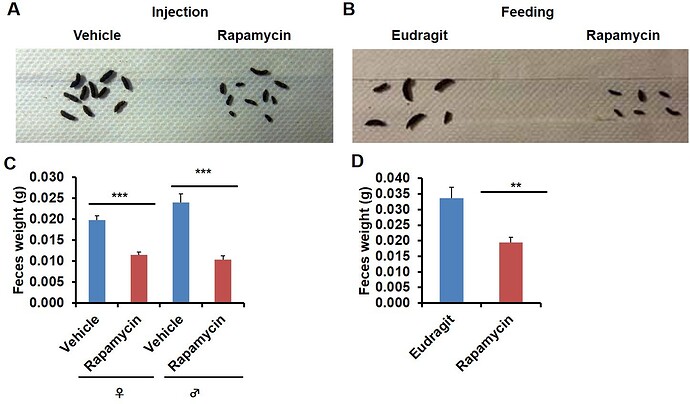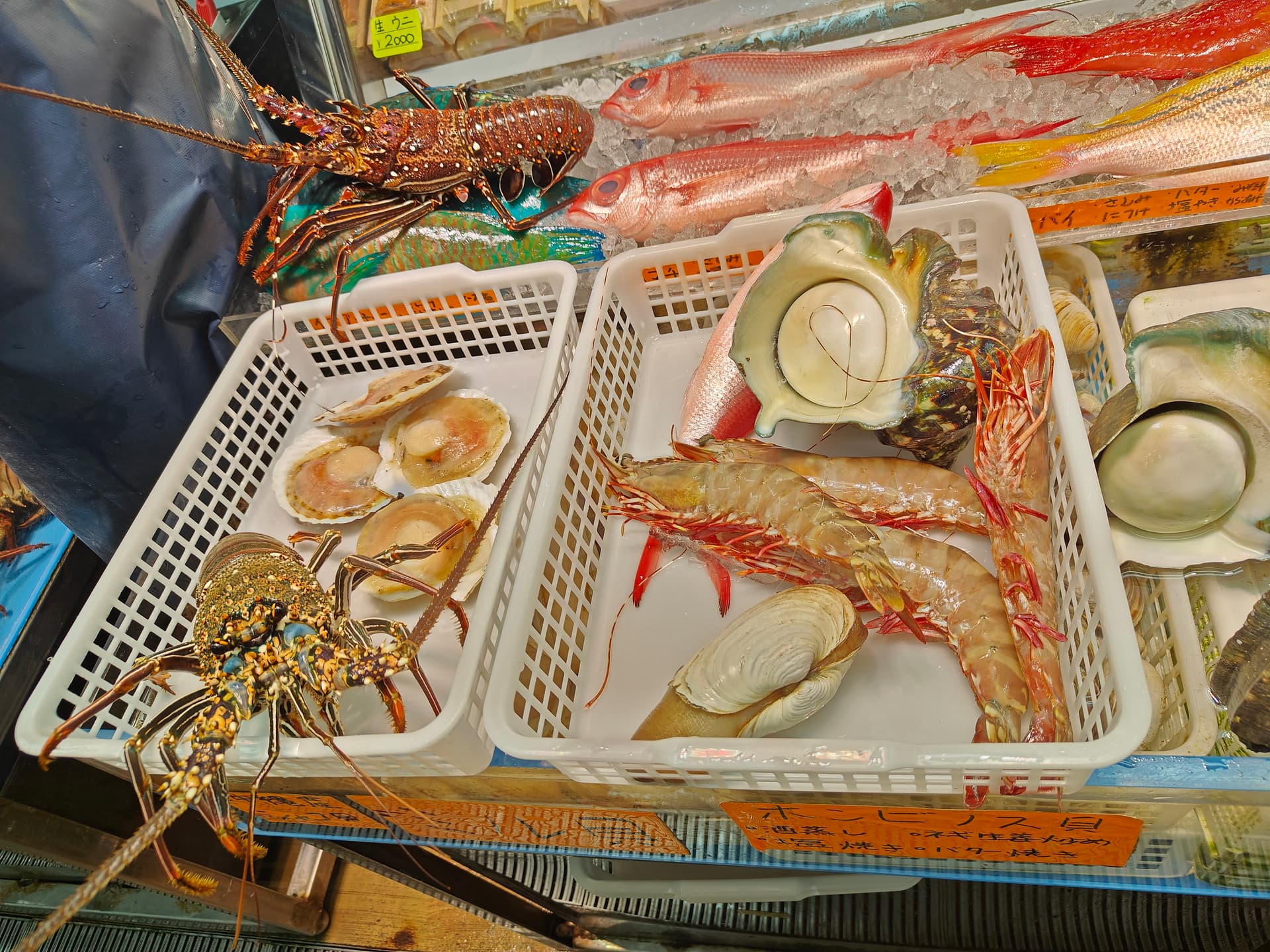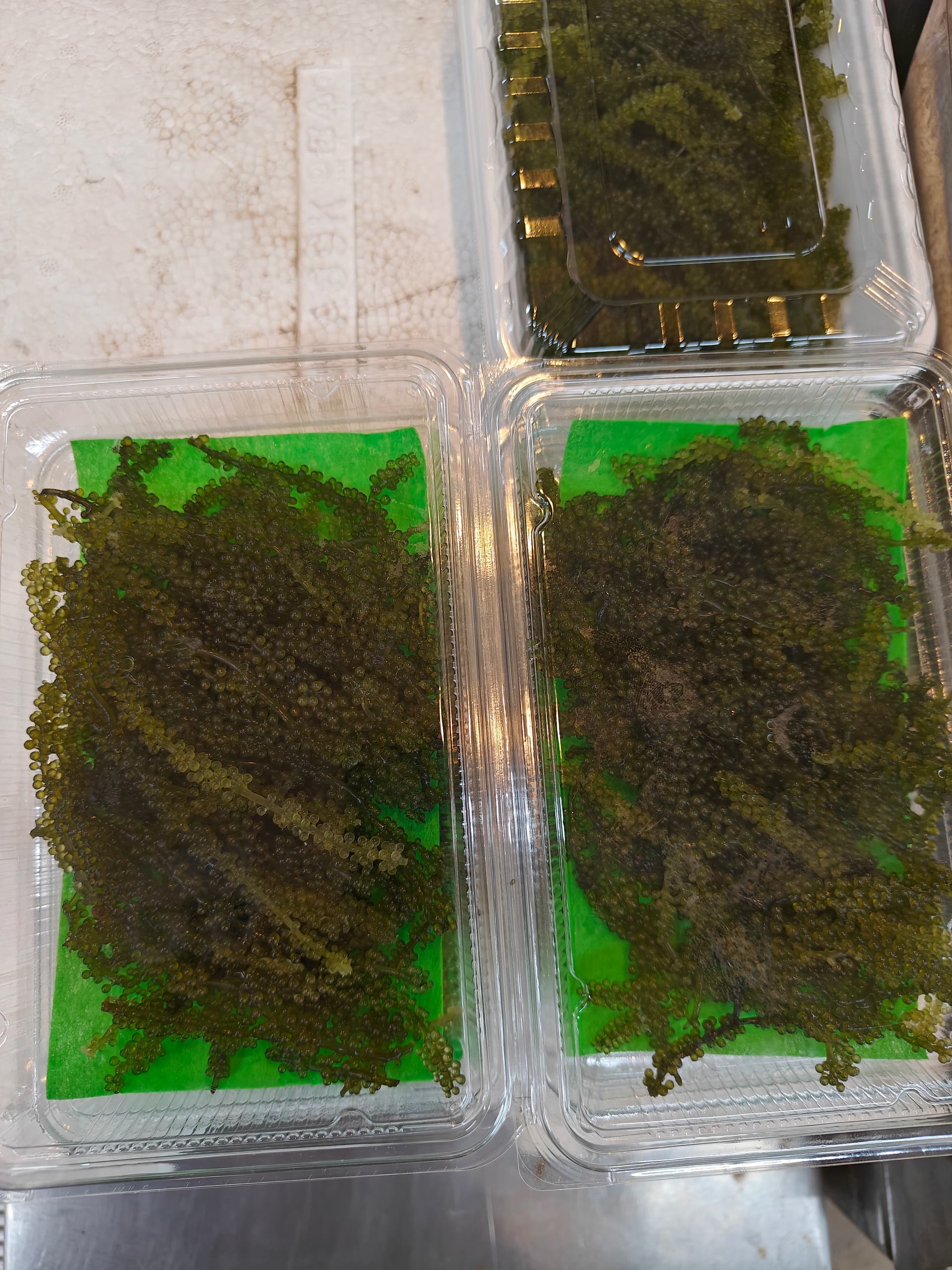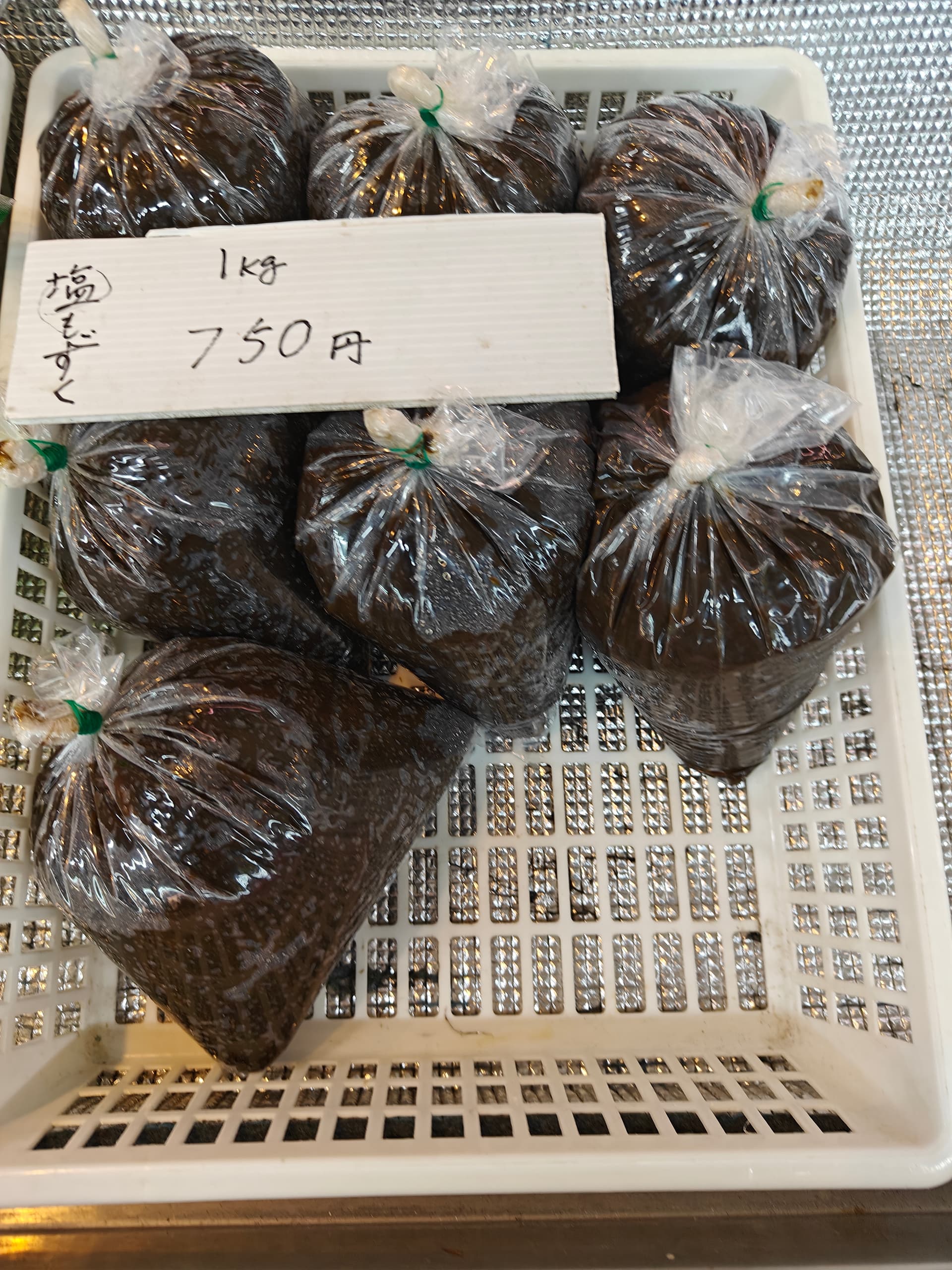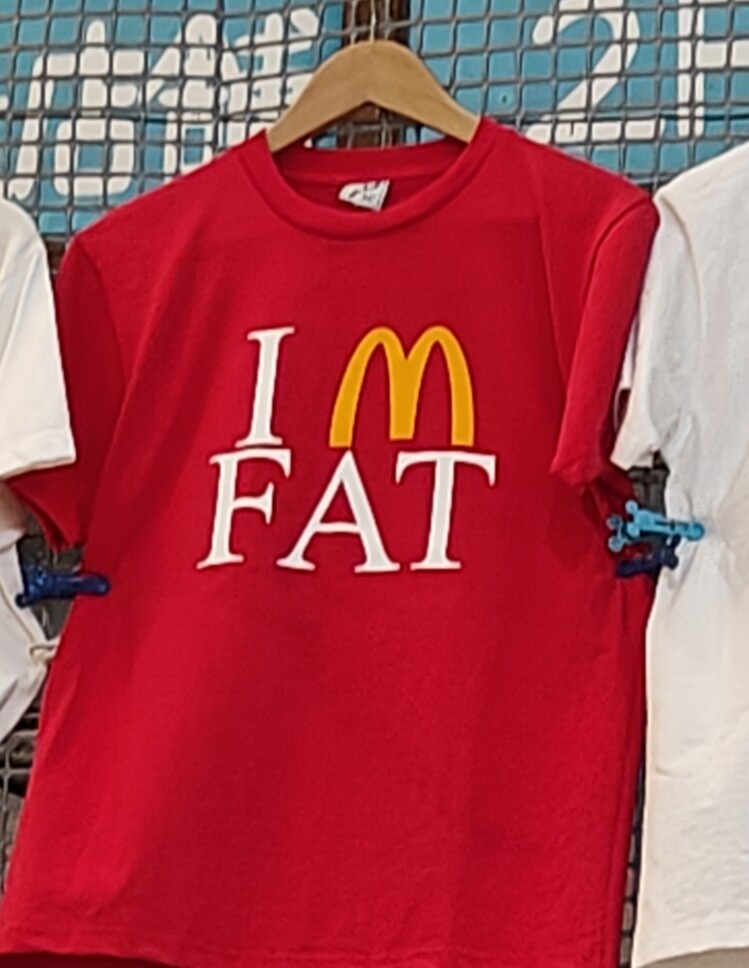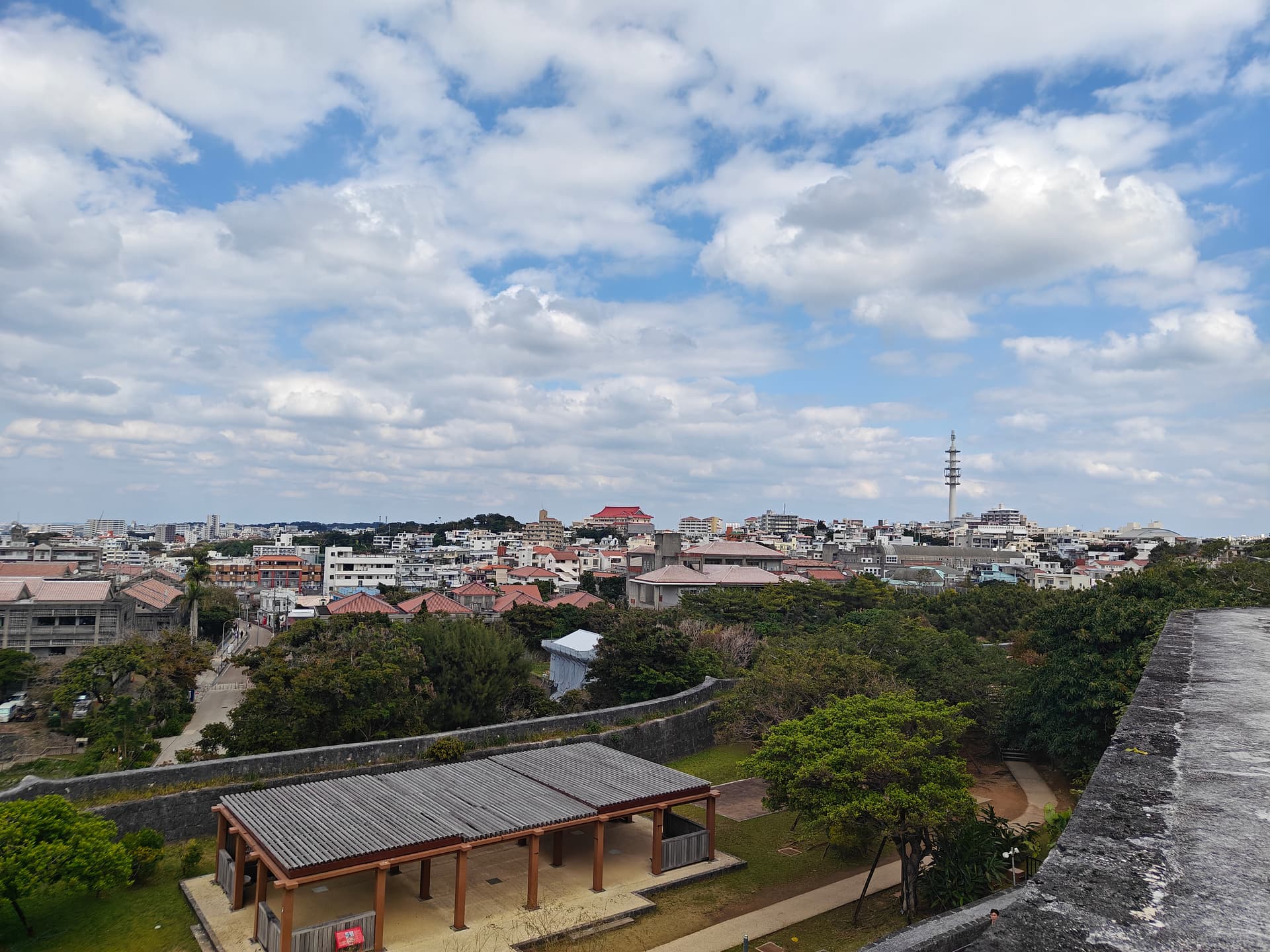No there have not been any specific studies I know of that have been focused on the microbiome impact of rapamycin - but I think that is a ripe area for research. There is no question that Rapamycin has a big impact on microbiome (mostly positive it seems, given the longevity results)… in the mouse studies the stools are much smaller, and in my own personal experience the stools seems to also be quite a bit smaller and darker in color. See image below, from this study.
I realize that that the microbiome is one area of health I have neglected. Can you recommend a book to get me up to speed?
Wow that is so interesting, hopefully scientists will pick up on this. Could MTOR suppression and microbiome have some big connection that is important, but overlooked?
This is a pretty new area of research - and from the podcasts I’ve been listening to with the researchers everthing is still just correlational data… no much in the way of good clinical trials. I recommend you listen to some of the Rhonda Patrick microbiome oriented interviews and then branch out from there:
https://www.youtube.com/results?search_query=rhonda+patrick+microbiome
But
It seems that it comes down to the specific kind of proteins, or maybe their composition, their specific distributon of aminoacids. For example, using a CGM, I observed that lean fish generates a much higher glucose spike than fat fish (or lean beef meat). And this probably depends on the microbiome.
I think it increases segmented, filamentous bacteria.
https://www.nature.com/articles/s41392-022-00974-4
Microbiota in health and diseases
In this review, we discuss the current knowledge of how microbiota links to host health or pathogenesis. We first summarize the research of microbiota in healthy conditions, including the gut-brain axis, colonization resistance and immune modulation. Then, we highlight the pathogenesis of microbiota dysbiosis in disease development and progression, primarily associated with dysregulation of community composition, modulation of host immune response, and induction of chronic inflammation. Finally, we introduce the clinical approaches that utilize microbiota for disease treatment, such as microbiota modulation and fecal microbial transplantation.
Thank you for that link.
That was a treasure of information. Incredible.
Interesting observation… I will check this when I have my CGM on, to see if I get the same results. What fish do you eat that you believe falls into the “fat fish” vs. “lean fish” categories?
Yes, that was surprising. I remember that I looked it up back then, and found this:
After 15 years of follow-up, 463 participants developed type 2 diabetes. Median fish intake, mainly lean fish (81%), was 10 g/day. Total fish intake was associated positively with risk of type 2 diabetes; the RR was 1.32 (95% CI 1.02–1.70) in the highest total fish group (≥28 g/day) compared with that for non–fish eaters (P trend = 0.04). Correspondingly, lean fish intake tended to be associated positively with type 2 diabetes (RR highest group ]≥23 g/day] 1.30 [95% CI 1.01–1.68]; P trend = 0.06), but fatty fish was not.
For me, lean fish was cod, halibut. Fatty fish was salmon. Las, I don’t like fatty fish… ![]()
And the following paper possibly shows the future (and is good news!) in that domain:
Noninvasive assessment of gut function using transcriptional recording sentinel cells (science.org)
Transcriptional recording by CRISPR spacer acquisition from RNA endows engineered Escherichia coli with synthetic memory, which through Record-seq reveals transcriptome-scale records. Microbial sentinels that traverse the gastrointestinal tract capture a wide range of genes and pathways that describe interactions with the host, including quantitative shifts in the molecular environment that result from alterations in the host diet, induced inflammation, and microbiome complexity. We demonstrate multiplexed recording using barcoded CRISPR arrays, enabling the reconstruction of transcriptional histories of isogenic bacterial strains in vivo. Record-seq therefore provides a scalable, noninvasive platform for interrogating intestinal and microbial physiology throughout the length of the intestine without manipulations to host physiology and can determine how single microbial genetic differences alter the way in which the microbe adapts to the host intestinal environment.
À propos CGM: Abbott now has a version 3 of the Freestyle Libre (incl. new app), that is MUCH better than the former system: you don’t have to place the phone (or device) near the sensor any longer – the reading in the app is permanent, real-time, and the sensor is much smaller, less than half. Same pricing, same autonomy.
But I see that they don’t offer it yet on their US website. I ordered mine on their Swiss site, where it is available since May 1st (albeit the iOS app should be available only in July).
And I put it on this morning. Nice!
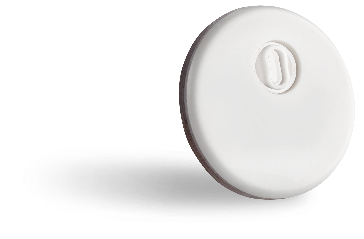
and soon… Apple sensor supplier Rockley Photonics is rolling out VitalSpex, a biosensing platform that can noninvasively monitor glucose, alcohol, and lactate.
Not just glucose but lactate measured non-invasively by that system! Getting lactate measurements is currently a huge PITA and quite expensive, yet it’s the only way really accurately assess exercise training zones. Being able to do it non-invasively in real time would be amazing!
In Okinawa. This is my breakfast.
Here are two famous types of Okinawan seaweed.
The green one is ‘sea grapes’. It has the texture of caviar but a more neutral and pleasant taste (not salty). The second is brown seaweed (usually served in vinegar) high in Fucoidans. Both types are served regularly as side dishes. Could be linked to their longevity.
Saw this at an Okinawan T-shirt shop. It could also typify why Okinawan people live longer.
Oh wow, fantastic pictures, enjoy your time there! Will you share some pictures of the surroundings? Must be absolutely stunning and fascinating!
Beautiful. Okinawa really does feel very different from the rest of Japan. Okinawans are their own ethnic group I guess.
Thanks so much for sharing. Hope you had a wonderful time there! It must be such a unique region to visit, as CT also underlines.
More study should be done of various genetic groups. Okinawans of course, but the Pygmy peoples may prove to be more important. These impressive people are under severe threat everywhere they live.
The average life expectancy at birth for different pygmy populations ranges from just 16 years to 24 years. Very few pygmy women reach the end of their reproductive period, as only a small percentage survive past age 40.
In order to compensate for the lack of older reproductive women, natural selection has shifted the reproductive period forward. The fertility peak of age at first reproduction in the Aeta is around 15 years old, which reduces generation time and compensates for their short lifespan.
In order to make this fertility shift, pygmies must reach full maturity faster than longer-lived human populations. For this reason, many pygmies stop growing at about age 12, several years earlier than other humans."
